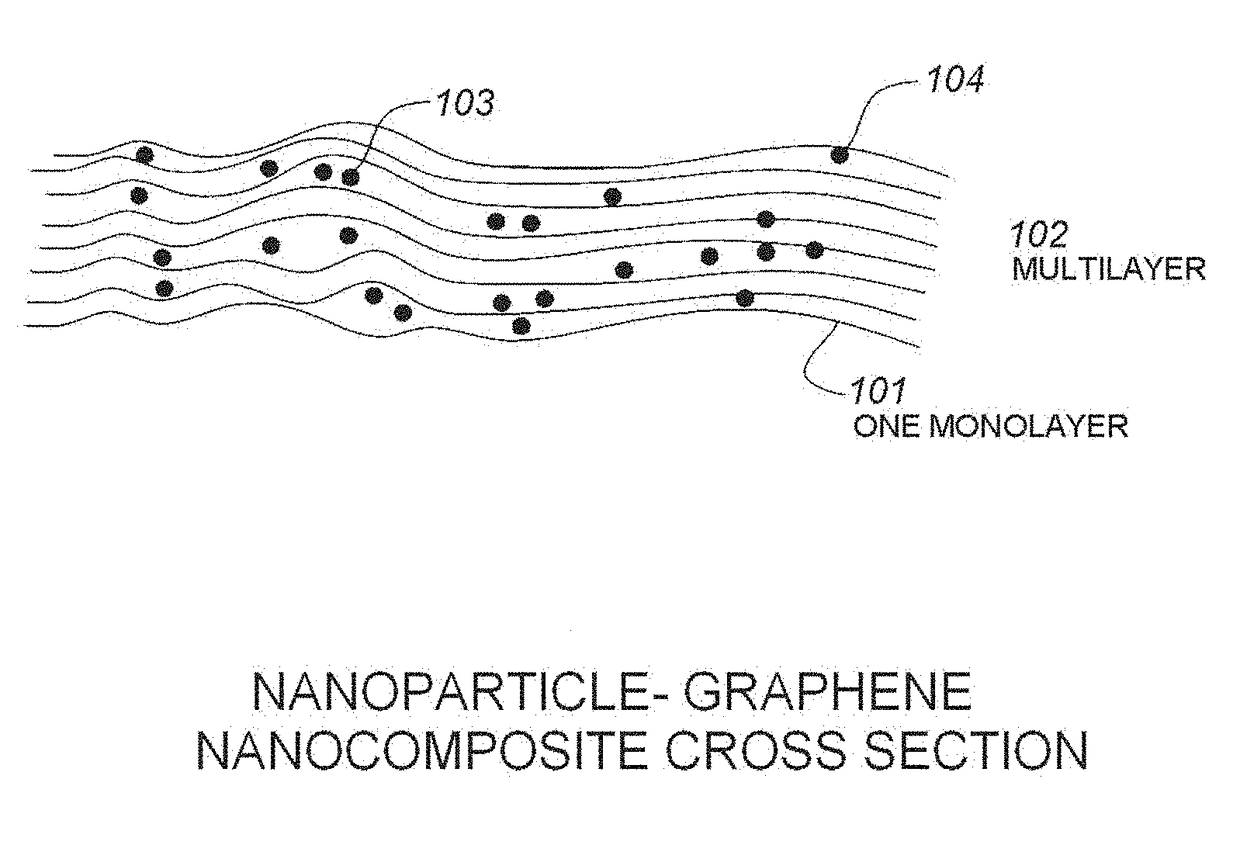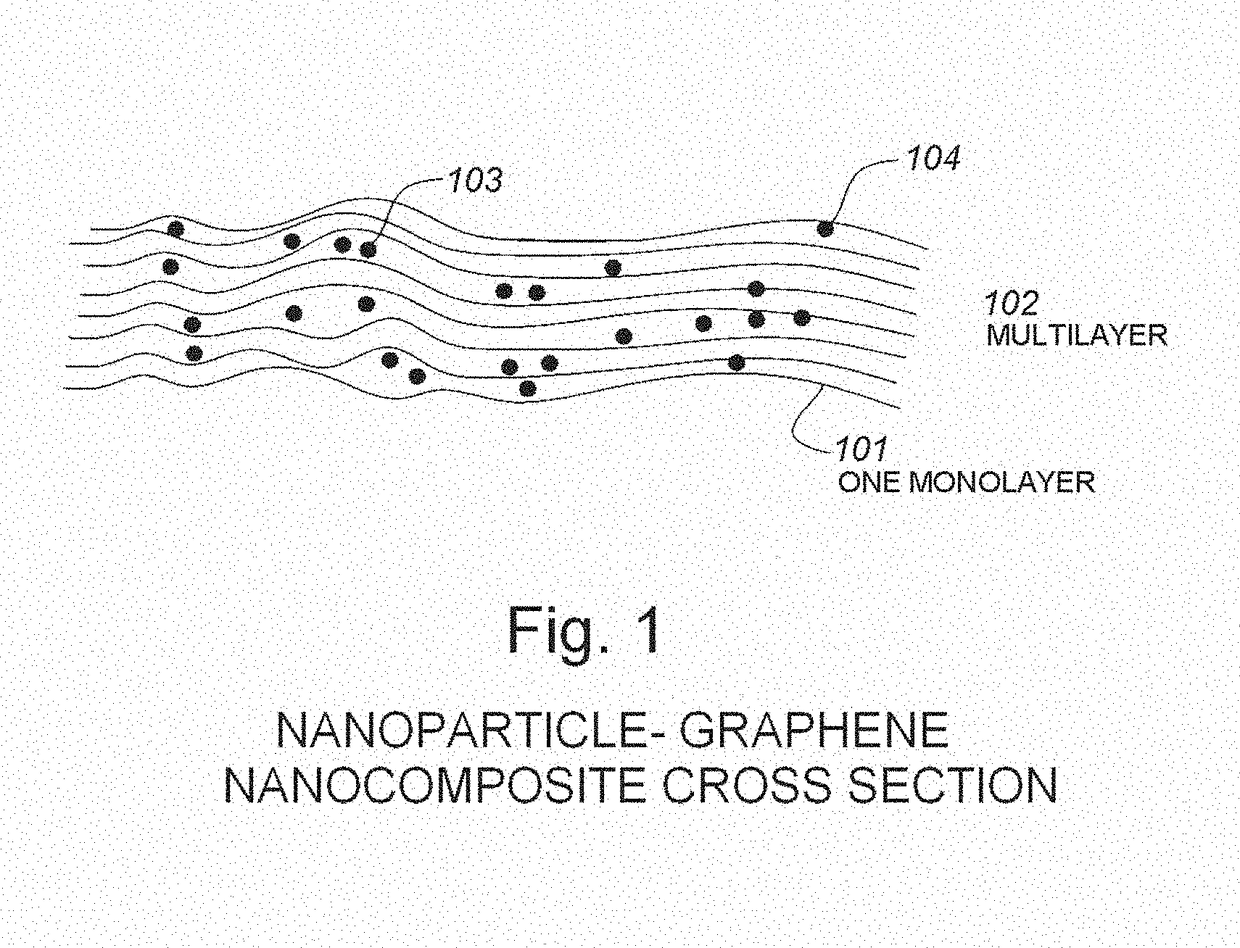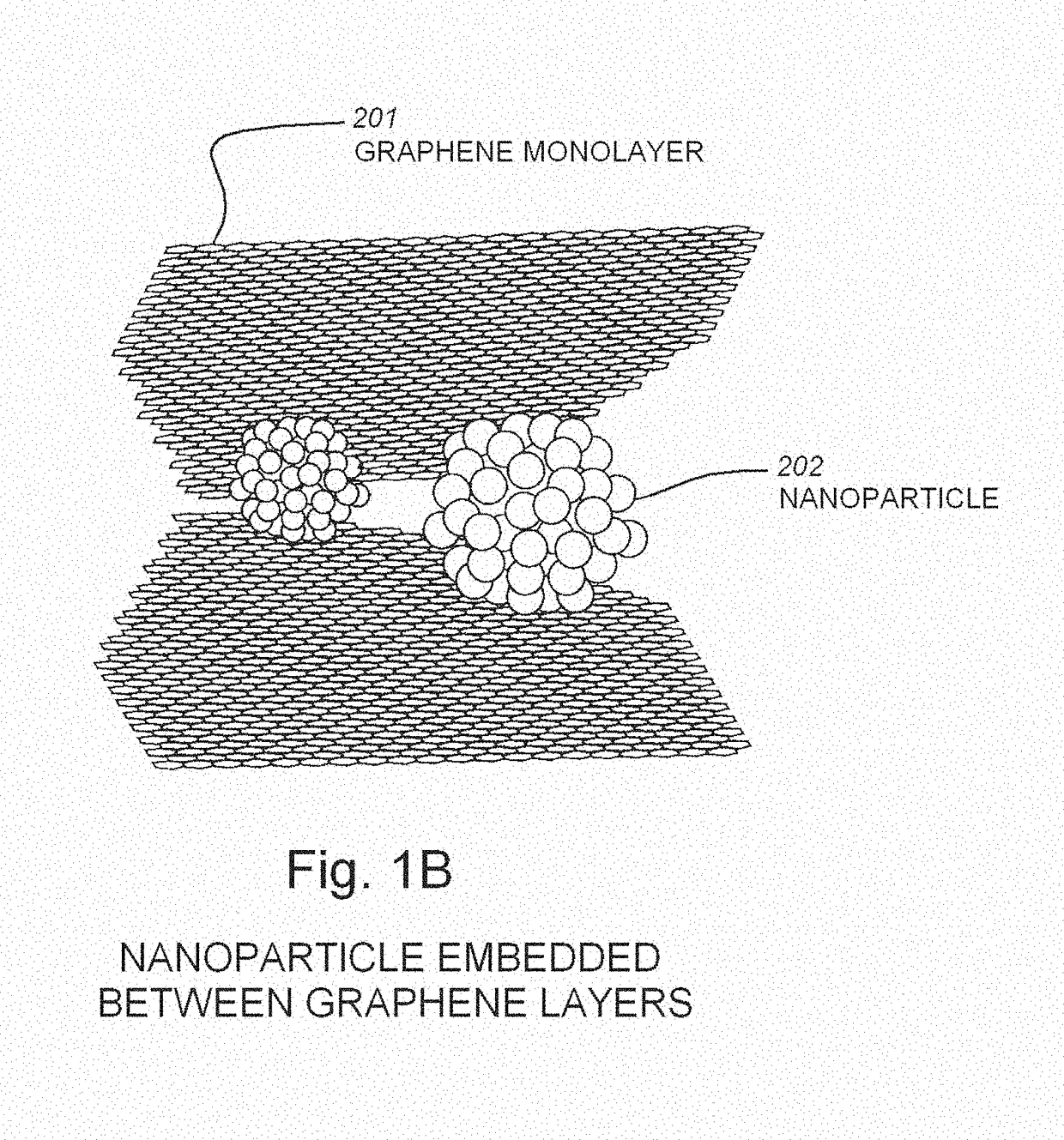Infrared radiation detectors using bundled-vxoy or amorphous silicon nanoparticles nanostructures and methods of constructing the same
a nanostructure and infrared radiation technology, applied in the field of nanoparticle bundled graphene fabrics, can solve the problems of high background noise, alter the resistance of the material, and raise the temperature of the material, and achieve the effect of increasing the lifetime and stability of the microbolometer performance of the detector
- Summary
- Abstract
- Description
- Claims
- Application Information
AI Technical Summary
Benefits of technology
Problems solved by technology
Method used
Image
Examples
Embodiment Construction
[0049]The present disclosure relates to a graphene nanoparticle structure that can be deposited atop an infrared (IR) radiation detecting system (e.g., microbolometer detector structure) to improve the efficiency thereof. In particular, the graphene nanoparticle structure, including one or more layers of graphene monolayers and one or more nanoparticles disposed therein, can be formed atop an amorphous silicon or vanadium oxide top surface of an existing microbolometer structure. The nanoparticles can include one or more of vanadium oxide (VxOy) or silicon. One aspect of the disclosure provides a silicon or other semiconducting containing readout circuits in a substrate, graphene layers, VxOy or silicon nanoparticles, first and second conducting interconnects each in electrical communication with the graphene-VoXy (G-VoXy) or graphene-silicon (G-Si) nanocomposite.
[0050]FIG. 1 depicts a cross section of a multilayer 102 graphene nanoparticle structure according to one or more aspects...
PUM
 Login to View More
Login to View More Abstract
Description
Claims
Application Information
 Login to View More
Login to View More - R&D
- Intellectual Property
- Life Sciences
- Materials
- Tech Scout
- Unparalleled Data Quality
- Higher Quality Content
- 60% Fewer Hallucinations
Browse by: Latest US Patents, China's latest patents, Technical Efficacy Thesaurus, Application Domain, Technology Topic, Popular Technical Reports.
© 2025 PatSnap. All rights reserved.Legal|Privacy policy|Modern Slavery Act Transparency Statement|Sitemap|About US| Contact US: help@patsnap.com



